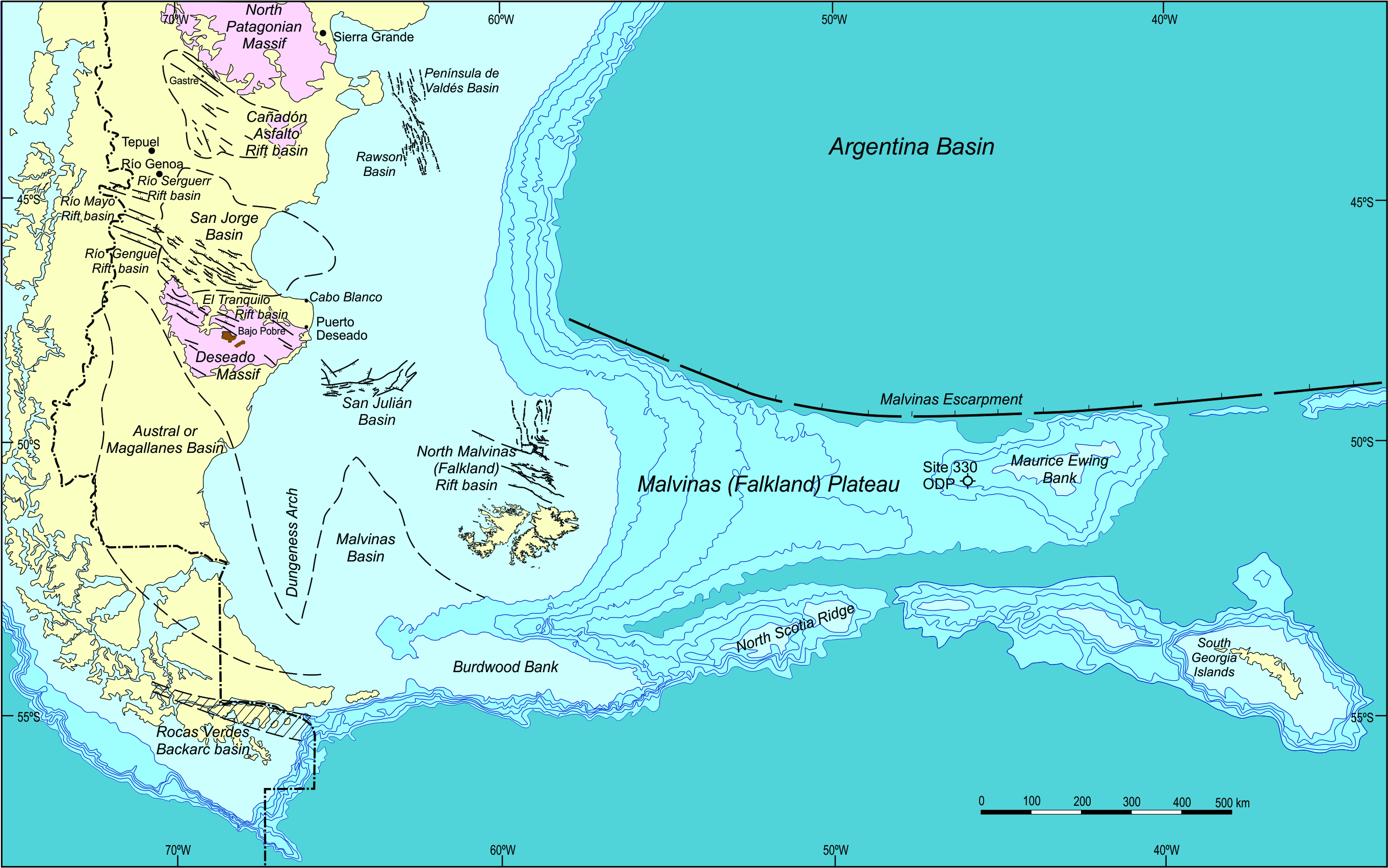The Malvinas (Falkland) Plateau Derived from Africa? Constraints for its Tectonic Evolution
REVIEW
Abstract
The latest studies on the tectonic evolution of the Malvinas (Falkland) Islands and their adjacent continental plateau further east are analyzed to assess a long controversy regarding the origin of these islands. Although there has been a controversy for several decades on this subject, new technologies and exploratory drilling have brought new data, however the debate of the geological evolution of this area remains open. The two dominant hypotheses are analyzed by assessing the eventual collision between the islands and the South American continent, the presence of a large transcontinental fault such as Gastre, the potential 180º rotation of the Malvinas Islands, and the occurrence of a mega-decollement with opposite vergence. These hypotheses are contrasted with the processes that have occurred in Patagonia, especially those based on the new isotopic data on the Maurice Ewing Bank at the eastern end of the Malvinas Plateau, and the current knowledge of the adjacent Malvinas Basin. The new data highlights the inconsistencies of certain models that proposed these islands migrated from the eastern African coasts near Natal, to their current position and rotated 180º on a vertical axis. The new observations are consolidating the hypothesis that postulates that the islands have been part of the South American continent since before the Paleozoic.


